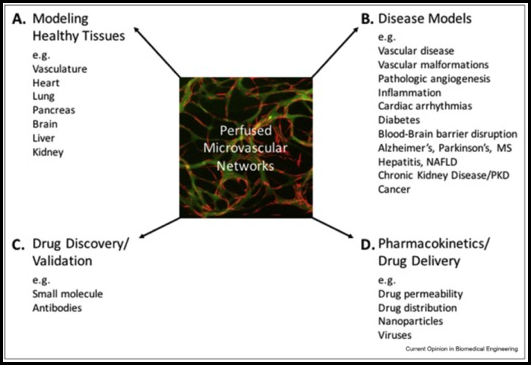The microvasculature is an essential component of nearly all tissues, with most cells residing within 200 μm of a vessel. Endothelial cells form the inner wall of microvessels and control which nutrients, cells and drugs cross into the underlying tissue. Given these critical roles, it makes sense to include functioning microvessels when creating tissue models, and these can be generated by pre-patterning of channels, 3D printing, or by “biology-directed” vasculogenesis and angiogenesis. These methods have been used to create tissue-specific vascularized micro-organs, vascularized microtumors, and vascular beds for studying tumor cell and immune cell extravasation. Recent innovations in 3D printing and high-throughput technologies have enabled more complex geometries and facilitated more comprehensive studies. Future developments hold promise for increasingly relevant models of healthy and diseased tissues, with implications for studying biological mechanisms and screening for new drugs.
Engineering perfused microvascular networks into microphysiological systems platforms


